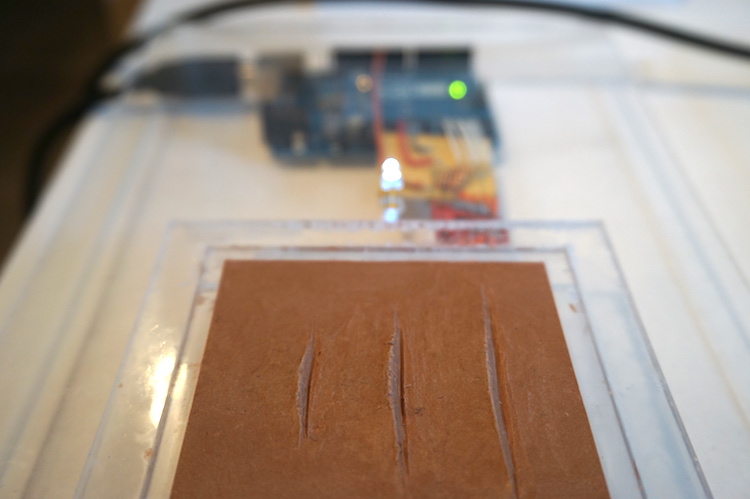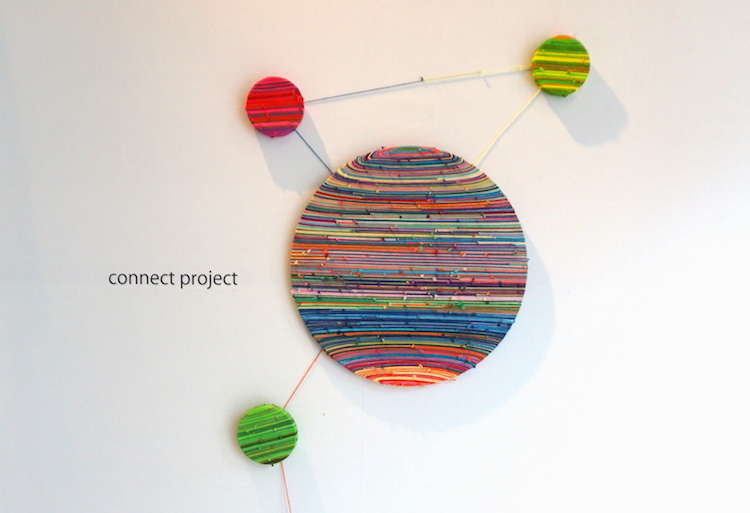FabCafe Tokyo exhibits the winners of the Haptic Design Award

And the winners of tactile design are… Find out at FabCafe Tokyo, where the winning prototypes of the Haptic Design Award are exhibited from March 26 to April 2. If these awards, organized by the Embodied Media Project at Keio University, are only in their second edition, the winners, selected from 70 projects submitted by researchers, artists and designers, are no less touching. After all, the annual YouFab Awards, also exhibited at FabCafe Tokyo and promoted by the Loftwork network since 2012, were originally called the Laser Cutter Design Contest…
Less spectacular than YouFab’s electronic and robotic gadgets, many of the haptic winners are wholeheartedly analogue. In our increasingly digital and virtual reality, it’s particularly refreshing to see that these awards emphasize haptic, less in its electronic and artificial sense than in its primary and sensory sense. It’s an opportunity to review current haptic technologies within the physical context of our most human sense of touch.


The grand prize winner, Edge User Interface by professor Shigeya Yasui, is the perfect marriage of simple Arduino tinkering and DIY craft, resulting in a down-to-earth prototype that appeals to both academics and the general public. Based on the concept of the electrical switch, Yasui sculpted out of clay different models of ridges, which, depending on whether you swiped them with your finger right or left, turned the light on or off. Some of the rune-like clay designs can also be used as dimmer switches.
Both first prize winners were inspired by our earliest haptic perceptions of infancy. In the Works category, Minami Kawasaki’s Tsumishi (“stacked paper”) reinterprets a toddler’s toy building blocks as ultrafragile, geometrical objects made from lightweight and transparent washi, Japan’s centuries-old handcrafted paper. We imagine the sensation of manipulating marshmallows like bubbles.

In the Ideas category, Lip Service by non-smokers Kyoko Kita and Kentaro Sako attempts to augment the experience of smoking cigarettes, electronic or not, and other adult pacifiers, with different textures to stimulate the lips.

More hi-tech, WIM, conceived by three students at the Royal College of Art, is a suit that can receive data and instructions about the body’s implicit movement in order to activate the expansion, contraction and vibration of artificial muscles. Potential applications include physical rehabilitation, athletic training and sharing movement with others.

As another wearable that could be used to augment our virtual experiences, Yusuke Yamazaki’s commercial prototype Hapbeat is a belt designed to enrich our musical perception (like a less technical version of Soundbrenner’s Pulse metronome).
Cross-Field Haptics, by Satoshi Hashizume from the Digital Nature Laboratory at Tsukuba University, uses magnetic fluid and electrostatic adsorption to render haptic textures, adding a new dimension to representations of living organisms in the medical and educational fields.
Reconciling traditional Japanese craft and interface for the non-sighted, Akira Ohira’s Connect Project, directly inspired by the saori weaving of Misao Jo in Osaka in 1972, suggests a tactile language through knots. It’s also a way of connecting people to each other through the yarn threads of this universally accessible craft.

More playfully and emotionally anthropomorphic, Megumieda Kuroda’s Cover is a series of masks which hide the face behind soft stuffed animals, while 傘ぶくろくんの手 (“umbrella bag hand”) is a plastic umbrella bag that ends in a glove shaped like a baby’s hand, with five dripping fingers.

When every object and every action has a palpable soul, the award organizers seem to say, haptic design makes us more sensitive to our environment and more compassionate toward others.
Haptic Design Award exhibition at FabCafe Tokyo through April 2
